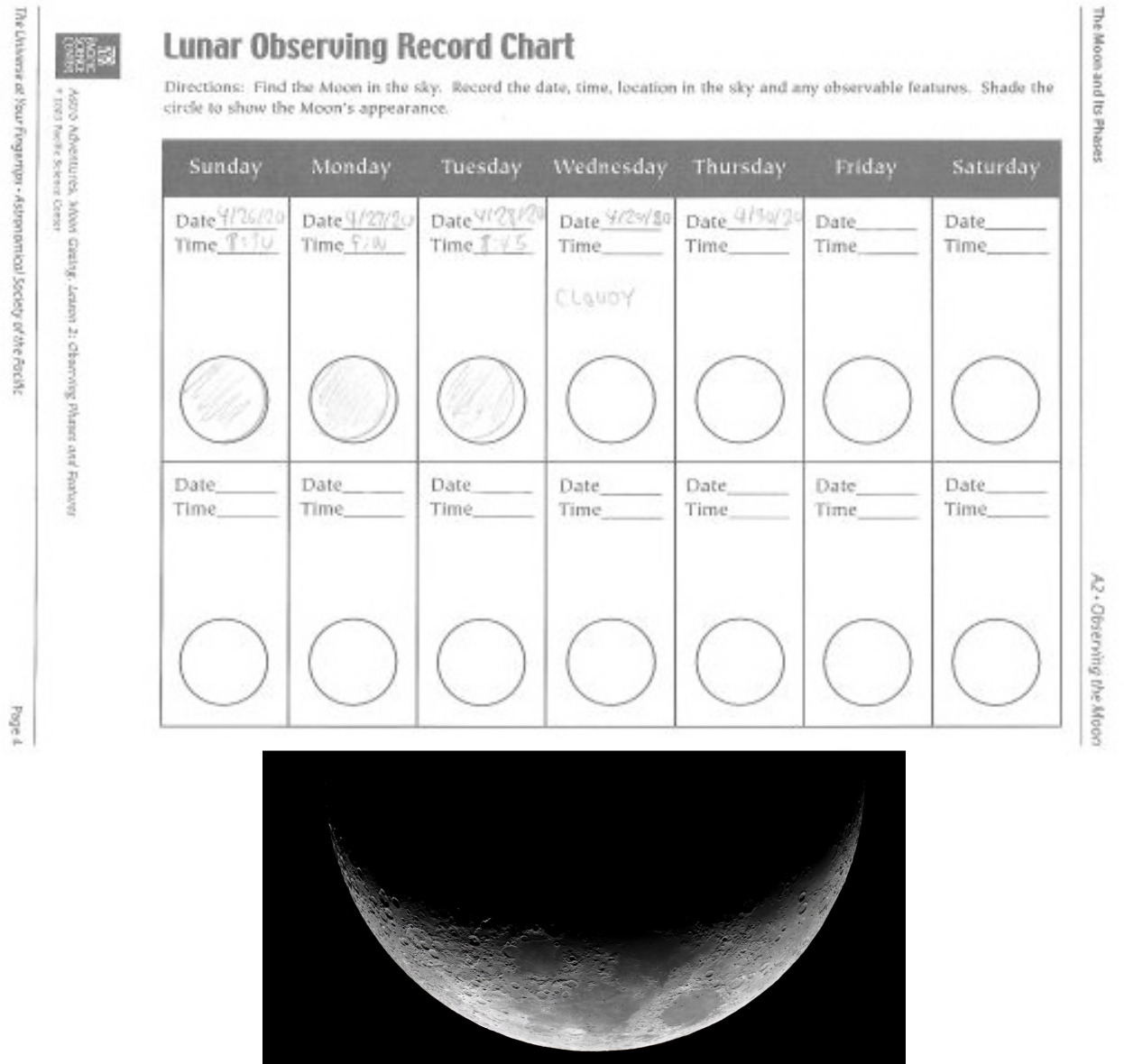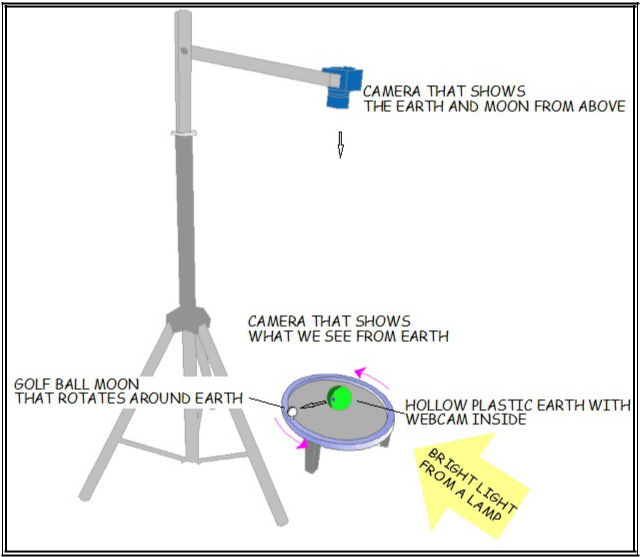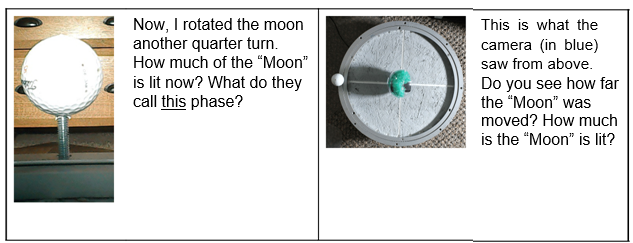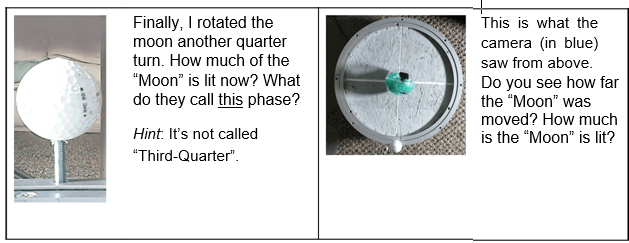by Jeff Hutton
Hello, Astronomers! I’m back with this week’s ideas to help you get to know the night sky. I also decided that it was time to give this a name: Looking Up! How do you like it?
Last week I invited you to pay attention to how the Moon appears to change shape from night to night. We’ve had some cloudy nights but I managed to get a few drawings done. I fund that a penny works well to help me draw the line between the bright and the dark areas on the Moon when the moon is still a thin crescent.
Here’s what I did as of Wednesday.

Here’s how the moon appeared last week during one of it’s crescent phases.
Have you ever wondered what makes the moon seem to change its shape from day to day? We can see the planets and moons in the solar system because they reflect sunlight. Most of these are spherical, like a basketball. Astronomers say that gravity will cause most objects in space bigger than 200 kilometers wide (about the distance between Berea and Cincinnati) to be round, like a ball. Sunlight always shines on ½ of a ball. Remember our first activity when you made a solar clock? I asked you to notice how much of a ball was lit by the sun when you took it outside.
The moon is a sphere. The bright part we see is part of the half that is lit by the sun!
I like to build models that help me (and other people) understand what we see in the night sky. Check out the picture below. I put a webcam inside a plastic Christmas ornament ball. We’ll call that the earth, in green, on the drawing below. I placed a golf ball to represent the Moon on a platform that let’s it move around the “Earth” in a circle. This is how the real Moon revolves the real Earth. I put another camera above my “Earth” to look down on my “Moon” and my “Earth.”

Now, the fun part. With a bright light shining on the model I rotated the “Moon” into the
New Moon position.




The sizes of my plastic “Earth” and golf ball “Moon” are about right, relative to each other. But my “orbit” of the Moon is way too small. In fact, if I made the circle the my “Moon” revolves on to the right scale, it would have to be 48 feet across!
I hope you’ve enjoyed my demonstration as much as I’ve enjoyed putting it together for you! Think about this demonstration as you continue to track the ever-changing face of the Moon!
If you have any questions, please contact me at jeffp.hutton@gmail.com.


0 Comments